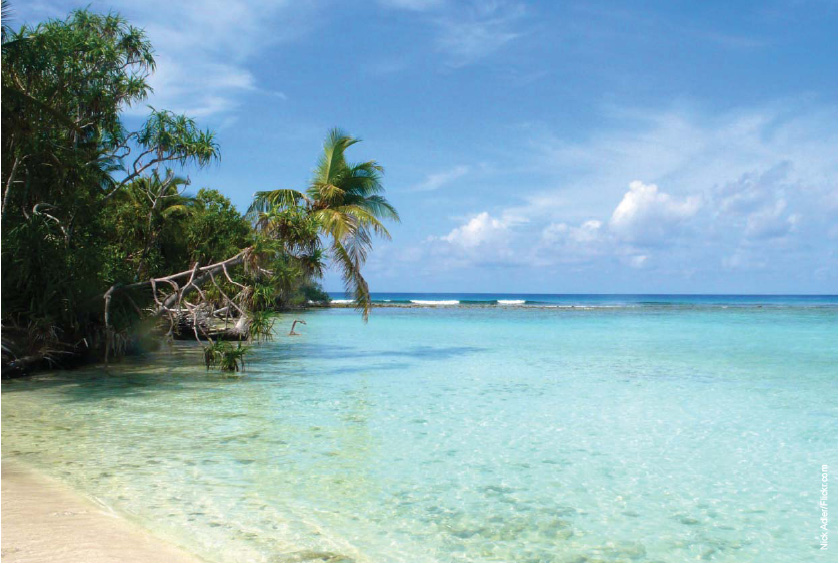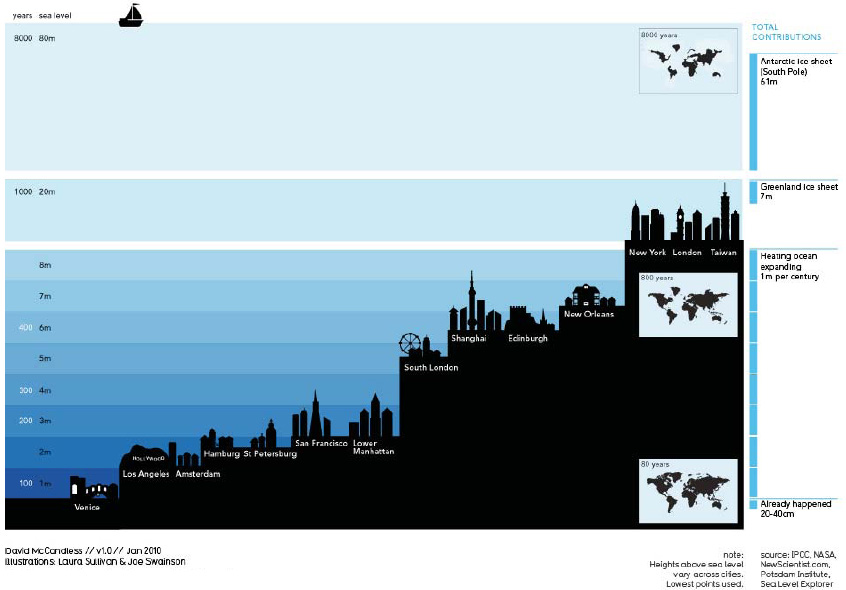|
A new study (Han and others 2010) that combined ground and satellite observations of Indian Ocean sea levels with simulated models of climate change has identified a clear spatial pattern in sea-level rise since the 1960s. The researchers found increased sea levels in some areas of the Indian Ocean, but substantial declines in southern tropical parts.
The Indian Ocean is the world’s third-largest ocean and accounts for about 20 percent of the Earth’s surface water. Within this ocean is an enormous pool of warm water extending from Africa’s east coast to the Pacific International Date line. Over the past 50 years,
|
 |
|
this Indo-Pacific warm pool has warmed by about 0.5°C. Along the northern Indian Ocean coast, sea levels have risen by an average of 12.7 mm a decade. The Bay of Bengal, the Arabian Sea, Sri Lanka, Sumatra and Java are particularly affected.
These changes in regional ocean patterns and sea levels could exacerbate flooding due to monsoons in Bangladesh and India and lead to increased rainfall in the eastern tropical Indian Ocean and drought in the western equatorial Indian Ocean. Climate-change impacts on the Indo-Pacific warm pool could mean that islands in the middle of the Indian Ocean would experience significantly higher sea-level increases than the global average. As a result, some coasts and islands in the Indian Ocean and their populations will suffer from increased environmental stress.
Another study related to sea-level rise (Webb and Kench 2010) appears to contradict the general anticipation that the impacts of climate change will eventually make low-lying reef islands unable to support human occupation. It uses aerial and satellite images taken over the past 60 years, a time during which there is evidence that sea levels have risen, to compare the landform dynamics of 27 atoll islands in the central Pacific Ocean. The study found that as a whole, instead of declining, the islands grew in land area by a total of 63 ha or seven percent.
The research findings show that although sea level in the central Pacific Ocean rose by about 2.0 mm/yr over the study period and that all 27 islands changed physically during that time, there is considerable variation in the amount and style of change between and among the islands, with an overall net increase in land area; 86 percent of the islands remained relatively stable or their outline or shape increased in size. Twelve of the 27 islands increased in size by more than three percent but only four islands reduced in area by more than three percent.
In addition to these net changes in area, the way the islands are positioned on the reef platform also changed. In 65 percent of cases, the islands moved closer to their lagoons, for example. The study’s authors conclude that islands are a constant feature of atoll reefs and despite sea-level rise, can increase or decrease in size; that island boundaries adjust dynamically in response to many conditions; and that erosion in some areas may be offset by increases in others. Finally, since the magnitude and style of change varies among islands, island nations will need to take note of their own particular type and rate of change when considering how to adapt to the impacts of a changing climate.
|
References
Climate Institute (2010). Oceans and Sea Level Rise: Consequences of Climate Change on the Oceans. http://www.climate.org/topics/sea-level/index.html (Accessed on 22 November 2010).
Han, W., Meehl, G., Rajagopalan, B., Fasullo, J., Hu, A, Lin, J., Large, W, Wang, J-W, Quan, X.-W., Trenary, L., Wallcraft, A., Shinoda, T., Yeager, S. (2010). Patterns of Indian Ocean sea-level change in a warming climate. Nature Geoscience. Published online: 11 July 2010.
Webb, A. and Kench, P. (2010). The dynamic response of reef islands to sea-level rise: Evidence from multi-decadal analysis of island change in the Central Pacific. Global and Planetary Change. doi:10.1016/j.gloplacha.2010.05.003







